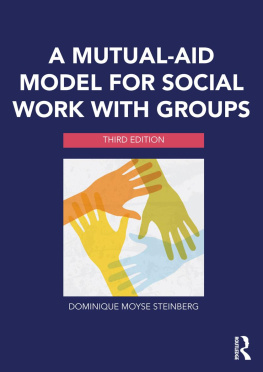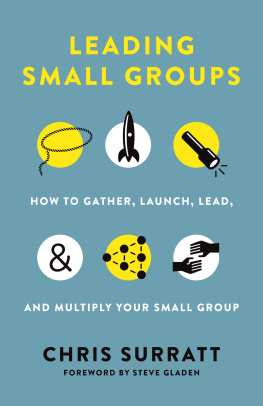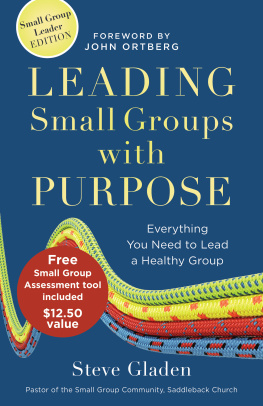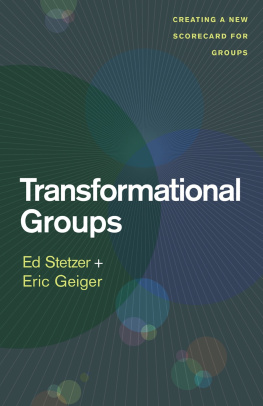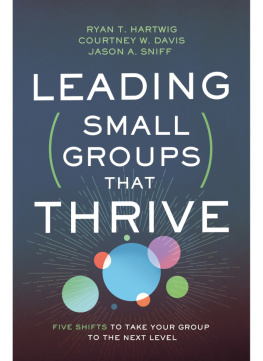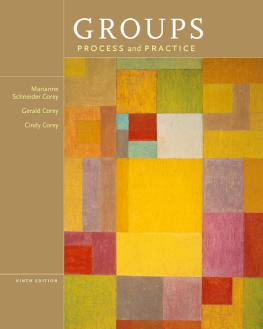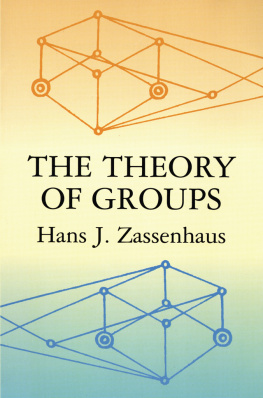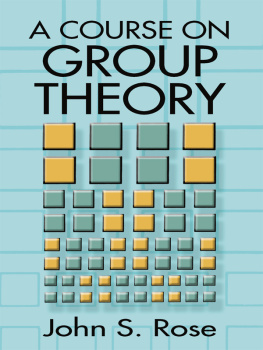Copyright 2017 by SAGE Publications, Inc.
All rights reserved. No part of this book may be reproduced or utilized in any form or by any means, electronic or mechanical, including photocopying, recording, or by any information storage and retrieval system, without permission in writing from the publisher.
FOR INFORMATION
SAGE Publications, Inc.
2455 Teller Road
Thousand Oaks, California 91320
E-mail: order@sagepub.com
SAGE Publications Ltd.
1 Olivers Yard
55 City Road
London, EC1Y 1SP
United Kingdom
SAGE Publications India Pvt. Ltd.
B 1/I 1 Mohan Cooperative Industrial Area
Mathura Road, New Delhi 110 044
India
SAGE Publications Asia-Pacific Pte. Ltd.
3 Church Street
#1004 Samsung Hub
Singapore 049483
Publisher: Kassie Graves
Associate Editor: Abbie Rickard
Editorial Assistant: Carrie Montoya
Production Editor: David C. Felts
Copy Editor: QuADS Prepress (P) Ltd.
Typesetter: Hurix Systems Pvt. Ltd.
Proofreader: Tricia Currie-Knight
Indexer: Karen Wiley
Cover Designer: Anupama Krishnan
Marketing Manager: Shari Countryman
Printed in the United States of America
Names: Hutchinson, David R., author.
Title: Great groups : creating and leading effective groups / David R. Hutchinson.
Description: Thousand Oaks, California : SAGE, [2017] | Includes bibliographical references and index.
Identifiers: LCCN 2015039146 | ISBN 9781452268347 (pbk. : alk. paper)
Subjects: LCSH: Small groupsPsychological aspects. | Group relations training.
Classification: LCC HM736 .H87 2017 | DDC 302/.14dc23 LC record available at http://lccn.loc.gov/2015039146
This book is printed on acid-free paper.
16 17 18 19 20 10 9 8 7 6 5 4 3 2 1
SAGE was founded in 1965 by Sara Miller McCune to support the dissemination of usable knowledge by publishing innovative and high-quality research and teaching content. Today, we publish over 900 journals, including those of more than 400 learned societies, more than 800 new books per year, and a growing range of library products including archives, data, case studies, reports, and video. SAGE remains majority-owned by our founder, and after Saras lifetime will become owned by a charitable trust that secures our continued independence.
Los Angeles | London | New Delhi | Singapore | Washington DC
Preface
This book, Great Groups: Creating and Leading Effective Groups, is designed to help students gain a beginning knowledge of how to plan for and develop successful group experiences. It is intended to assist the group work proficiency of graduate students in counseling, social work, and psychology programs, as well as undergraduate students in psychology, social work, or human service programs.
The book should also be useful for experienced group workers. They may find that it has some unique ways of approaching group situations and problems that are helpful. Its designed to be a practical, no-nonsense guide to creating and leading groups that really work.
I have led groups in a variety of human service settings, as well as taught undergraduate and graduate coursework about group work for the past 30 years. In my courses, I always tell students that a course about group work should serve a number of purposes. A course about group work should certainly increase a students awareness of theory related to group work, and it should give students some nuts-and-bolts tools to help them actually run a group. But additionally, it should communicate a belief and passion about the great things that effective groups can do for people. I would hope the same for this bookthat it informs about theory; that it shares some practical, useful information about running an actual group; and that it inspires students to run groups and to become proficient group workers.
I see this book as an extension of my teaching about group work, and as such, it is personal and conversational in tone. I want to talk directly with students about this way of working with people and to share some of my ideas about what is effective and how they might avoid some of the mistakes Ive made. The book is filled with examples of groups in action, drawn from my own experiences with groupsthe names and identifying information of individuals are fictional, of course. I hope that students actually enjoy reading this book and get excited about the groups they might run. This book could also serve as a helpful reference to refer back to once they have groups up and running.
One of the students who used my book about counseling and psychotherapy skills with individuals, The Essential Counselor, wrote to me that she considered that book a great practical skills manual for my professional future. I would hope that this book, Great Groups, would do the same for students embarking on careers that will include working with groups.
A NOTE TO INSTRUCTORS
I want this book to be a useful resource for instructors, particularly for instructors who are new to teaching about group work. The 13-chapter format is designed to accommodate a traditional semester-long course, and each chapter affords ample opportunity for students to do some personal reflectionswhich could easily include written assignments, if an instructor so desiresand opportunities for group work practice. These reflection and group fishbowl lab practice activities could be used as either supplemental or in-class activities. The inclusion of these activities reflects my firm belief that the best learning in helping coursework is assisted by a combination of reading, discussion, and hands-on practice of the material. A semester-long course about group work affords the perfect vehicle for discussion of theory and group practice activities.
In particular, the group fishbowl lab practice exercises afford students the opportunity to practice the use of skills in groups. These structured group exercises feature students in the roles of leaders, members, and observers. Students can be encouraged to participate in these exercises in all these roles and to provide one another with supportive, specific, constructive feedback about their activity in the groups. You, the instructor, could also volunteer to participate occasionally, if you want.
The For Further Thought section of each chapter provides instructors with a number of alternative learning activities that could serve to supplement in-class learning. There are clearly more activities provided than could be completed by students during the course of a semester, so instructors can choose those that seem to best fit their students needs. Some of these activities include using exercises that have been designed by my students in graduate-level courses about group work.


